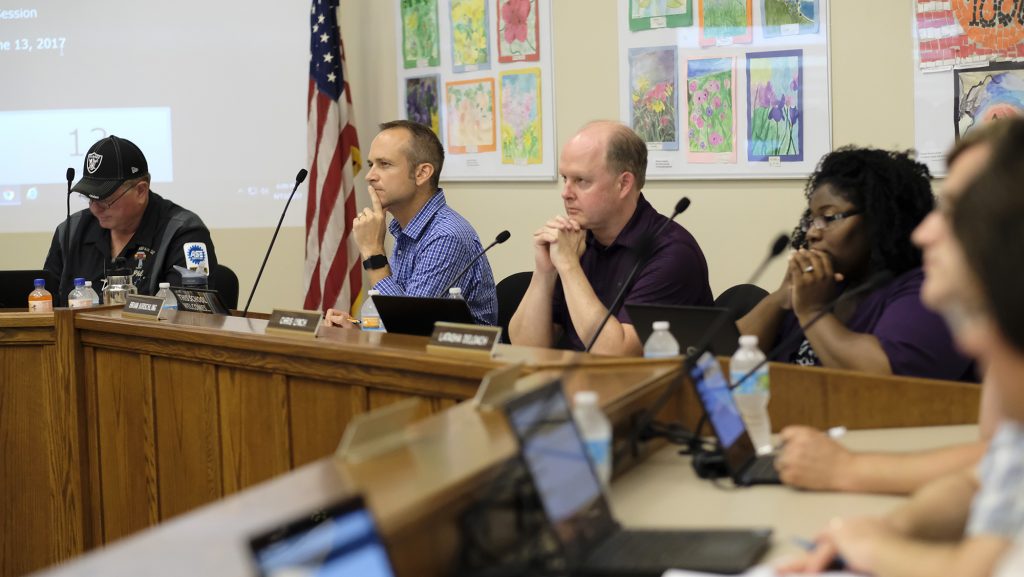A day after students rallied at the State Capitol to advocate for gun reform, Iowa City schools on April 21 looked at a different method to prioritize school safety by holding their first ALICE training sessions with parents and students.
ALICE — Alert, Lockdown, Inform, Counter, Evaluate — is a nationwide training program started in the late-1990s in response to the Columbine High School shooting in Colorado.
The plan is designed to equip potential victims with various alternatives to respond to an active shooter other than a single lockdown option, which Iowa City School Superintendent Stephen Murley said was the method in which the district previously trained faculty and staff.
The district held sessions at each of the three Iowa City high schools, which invited the Iowa City police to conduct the parent/student-focused training in response to a wider discussion on student safety after the Parkland shooting on Valentine’s Day.
Omega Dancel, a para-educator at West High, said it was her first time in ALICE training. She thought her elementary-age daughter should learn it.
“When we get home today, I’m going to tell her some of the skills I learned so she’ll know what to do,” Dancel said. “There are ways to teach them in language that they can understand so that it’s not as scary for them.”
The training balanced instruction and discussion with directed situations with volunteers. The training differed from other active-shooter scenarios, which practice responding to a mock intruder without so much structured discussion. No blanks were used in the training.
Iowa City police Officer Ashton Hayes led the attendees, and she kept the tone light but firm, tossing in jokes throughout the two-hour session.
“This is not military boot camp,” she said.
In one scenario, a group of volunteers were instructed to hide using a table and chairs before another volunteer entered with a fake red gun. A discussion then ensued about how the participants felt and other strategies that could be used in a similar situation, including barricading the door, throwing objects, and escaping.
Murley said the schools stopped training the lockdown response approximately five years ago. The district changed because by only practicing hiding, students thought staying in the classroom was the only solution, even if the intruder was in a faraway wing of the school.
A bill signed into law by Iowa Gov. Kim Reynolds on April 11 requires schools to implement a security plan for active-intruder emergencies.
Although most schools in Iowa already met the standards, including Iowa City schools, Murley said the district wanted to go beyond the requirements, which include conducting an annual drill for chosen school personnel and an option of whether students should be included.
This fall, Murley said, Iowa City secondary schools plan to integrate instructional ALICE videos with drills where appropriate, such as in the “L” of lockdown.
“We do tornado drills, we do fire drills,” Murley said. “Why? Because we want people to know what to do when it happens.”
He noted that parental attitudes on student drills differed, and he wanted to create a solution in which parents could feel comfortable.
Iowa City police Capt. Troy Kelsay, a 30-year department veteran who assisted in the training, was the first law-enforcement person to respond to the 1991 University of Iowa shootings. He said that ever since, officials have looked for a better methods to respond to active intruder.



